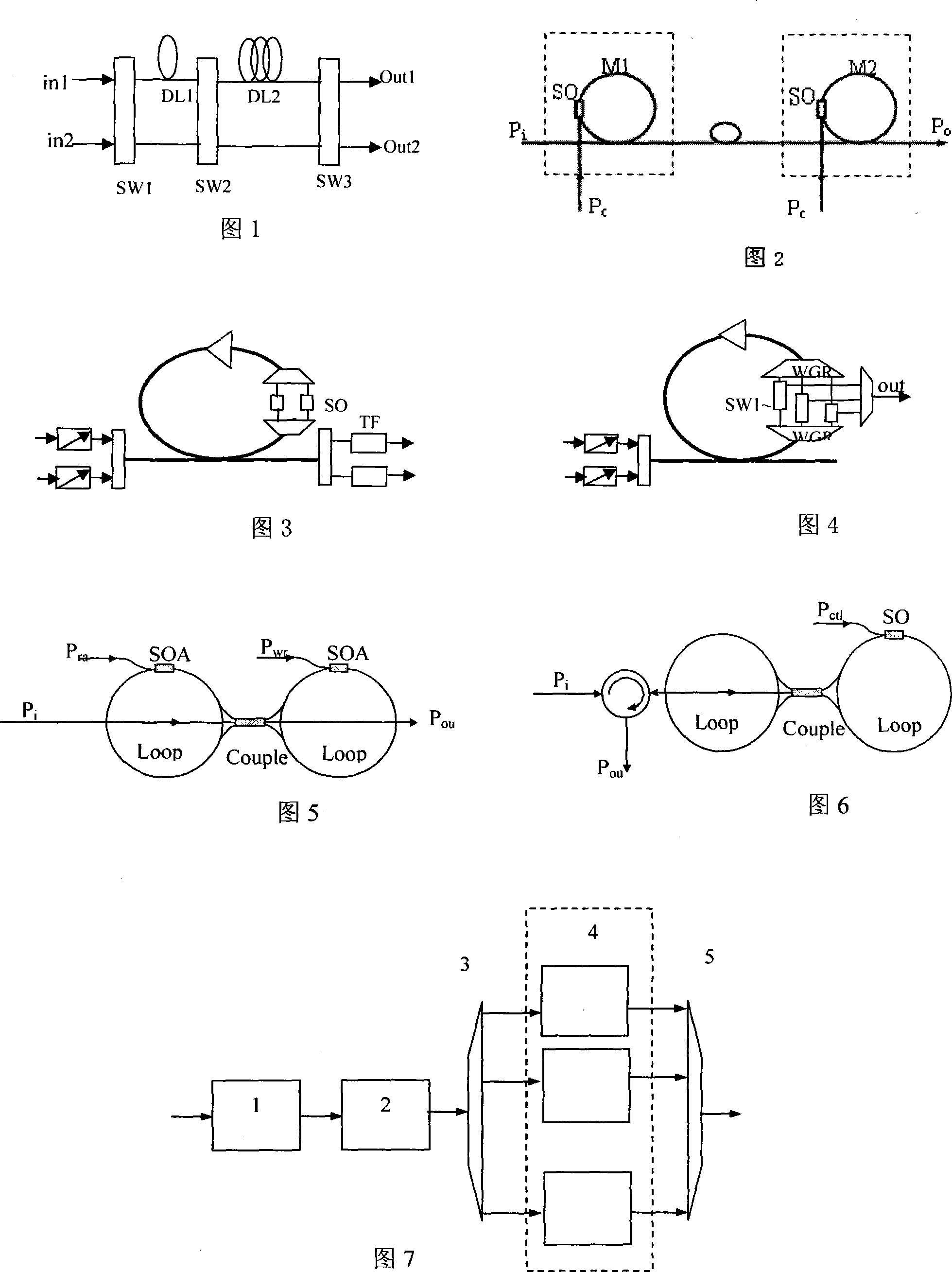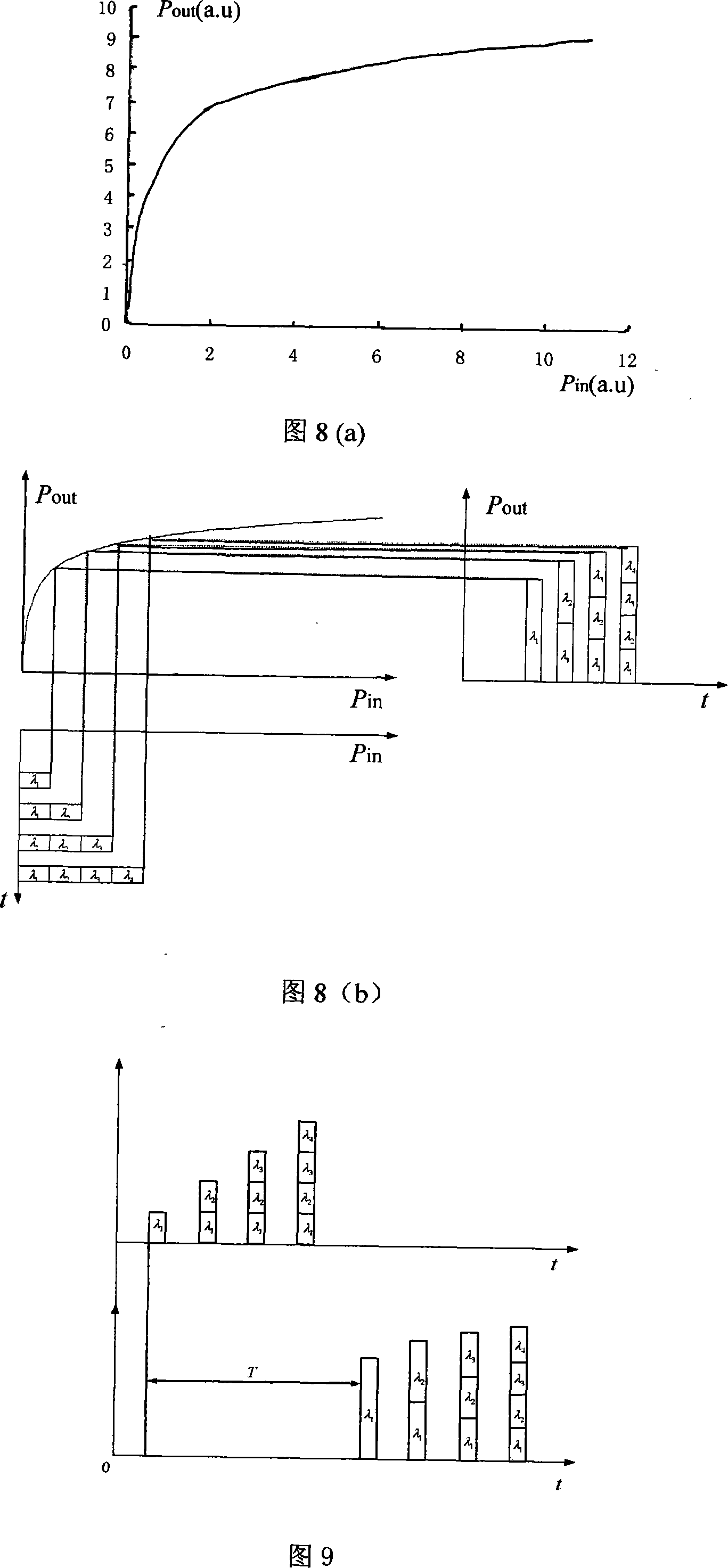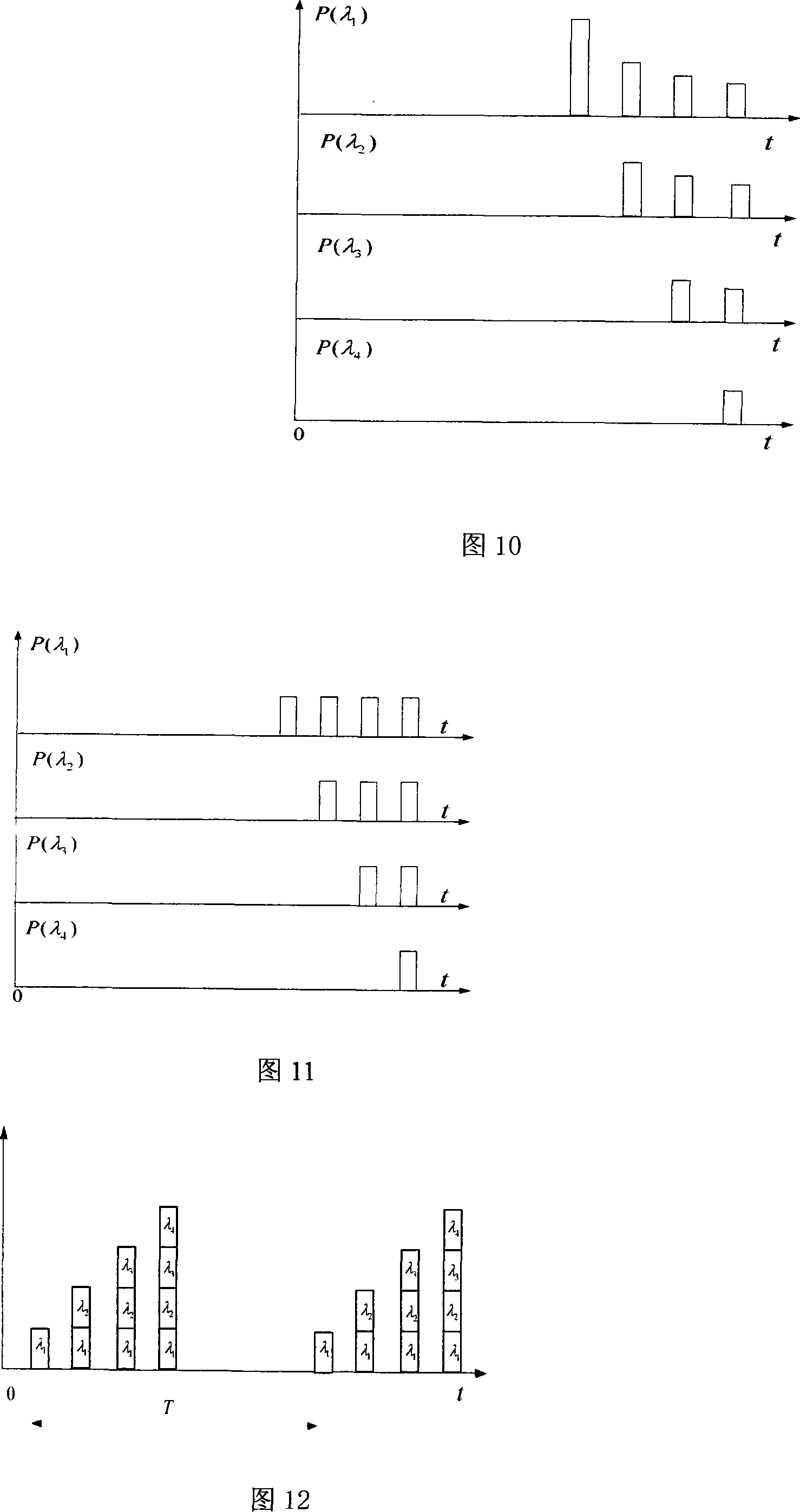Multi-wave length parallel buffer full optical buffer
An optical buffer and multi-wavelength technology, applied in the field of optical communication, can solve problems such as signal quality degradation, achieve good buffer performance, improve signal-to-noise ratio, and maximize flexibility
- Summary
- Abstract
- Description
- Claims
- Application Information
AI Technical Summary
Problems solved by technology
Method used
Image
Examples
Embodiment 1
[0037]The power equalizer 1 and the power equalizer 4 groups (they are composed of the same kind of devices) are semiconductor optical amplifiers SOA, which have obvious gain saturation characteristics. The buffer unit 3 uses the inventor's patented product "dual-loop coupled all-optical buffer" (Patent No. ZL 02 1 53429.2, 2002).
[0038] The double-loop coupled all-optical buffer, as shown in Figure 5 and Figure 6, not only stores optical signals, but also reads and writes under the control of another optical signal. This kind of buffer utilizes two sides ports of a 3×3 optical fiber coupler to form a double-ring structure through optical fiber feedback, and the middle port is used as the input and output ports of the buffer. It has two structures: through and return. The pass-through structure is shown in Figure 5. The middle ports on both sides of the 3×3 fiber coupler are used as the input and output ports respectively. There is an SOA in each fiber ring, and the control...
Embodiment 2
[0040] The power equalizer 1 and power equalizer 4 groups (they are composed of the same kind of devices) are erbium-doped fiber amplifiers, which have obvious gain saturation characteristics. Buffer unit 3 uses the buffer unit of "reflective optical fiber (FP cavity) + optical switch". The optical switch at both ends of the buffer uses a nonlinear loop mirror NOLM, or uses a T-bit asymmetric demultiplexer TOAD, or uses Nonlinear Fiber Sagnec Interferometer NFSI (Nonlinear Fiber Sagnec Interferometer) and other optical switches.
Embodiment 3
[0042] The power equalizer 1 and the power equalizer 4 groups (they are composed of the same device) are optical fiber Raman amplifiers, which have obvious gain saturation characteristics. The cache unit 3 uses a cache unit of "optical fiber ring + optical switch".
PUM
 Login to View More
Login to View More Abstract
Description
Claims
Application Information
 Login to View More
Login to View More - R&D
- Intellectual Property
- Life Sciences
- Materials
- Tech Scout
- Unparalleled Data Quality
- Higher Quality Content
- 60% Fewer Hallucinations
Browse by: Latest US Patents, China's latest patents, Technical Efficacy Thesaurus, Application Domain, Technology Topic, Popular Technical Reports.
© 2025 PatSnap. All rights reserved.Legal|Privacy policy|Modern Slavery Act Transparency Statement|Sitemap|About US| Contact US: help@patsnap.com



